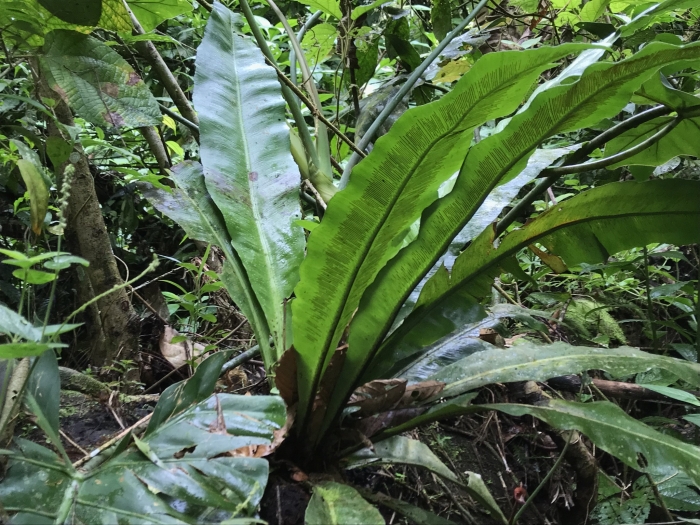Bird’s Nest Spleenwort
(Asplenium serratum)
Bird’s Nest Spleenwort (Asplenium serratum)
/
/

David McCorquodale
CC BY 4.0
Image By:
David McCorquodale
Recorded By:
Copyright:
CC BY 4.0
Copyright Notice:
Photo by: David McCorquodale | License Type: CC BY 4.0 | License URL: http://creativecommons.org/licenses/by/4.0/ | Rights Holder: David McCorquodale | Publisher: iNaturalist | Date Created: 2018-01-26T10:11:03-08:00 |


















Estimated Native Range
Summary
Asplenium serratum, commonly known as the Bird’s Nest Spleenwort or New World Birdnest Fern, is an evergreen fern native to tropical rainforests and rocky areas in the Caribbean, Central and South America, and extends into Florida. It is typically found growing as an epiphyte on tree trunks or as a lithophyte on eroded limestone outcrops and fallen logs. In Florida, where it is considered rare and is a state-listed endangered species, it is found in the humid, shaded environments of hammocks and swamps. Asplenium serratum can reach a size of 2-3 feet (0.6-0.9 meters) in both height and width, with a rosette of arching, glossy, bright green fronds that have a serrated edge, giving the plant its name.
This fern is valued for its unique growth habit and lush foliage, which makes it an attractive addition to tropical and subtropical gardens. It is often used in shaded garden areas, as a potted houseplant, or in greenhouse collections. It thrives in moist, well-drained soil with high organic content and requires high humidity and dappled shade to partial sunlight. While it is relatively low maintenance, it is sensitive to cold temperatures and should be protected from frost. In cultivation, it is important to mimic its natural epiphytic or lithophytic conditions to ensure healthy growth.CC BY-SA 4.0
This fern is valued for its unique growth habit and lush foliage, which makes it an attractive addition to tropical and subtropical gardens. It is often used in shaded garden areas, as a potted houseplant, or in greenhouse collections. It thrives in moist, well-drained soil with high organic content and requires high humidity and dappled shade to partial sunlight. While it is relatively low maintenance, it is sensitive to cold temperatures and should be protected from frost. In cultivation, it is important to mimic its natural epiphytic or lithophytic conditions to ensure healthy growth.CC BY-SA 4.0
Plant Description
- Plant Type: Fern
- Height: 1.5-3 feet
- Width: 1.5-3 feet
- Growth Rate: Moderate
- Flower Color: N/A
- Flowering Season: Non-Flowering
- Leaf Retention: Evergreen
Growth Requirements
- Sun: Part Shade, Full Shade
- Water: Medium
- Drainage: Slow, Medium
Common Uses
Border Plant, Low Maintenance, Potted Plant
Natural Habitat
native to tropical rainforests and rocky areas in the Caribbean, Central and South America, and extends into Florida
Other Names
Common Names: Bird’s Nest Fern, Antenna Fern, Wild Birdnest Fern
Scientific Names: , Asplenium serratum, Asplenium brasiliense, Asplenium crenulatum, Asplenium crenulatum, Asplenium integrum, Asplenium lanciforme, Asplenium longifolium, Asplenium nidus, Asplenium raddii
GBIF Accepted Name: